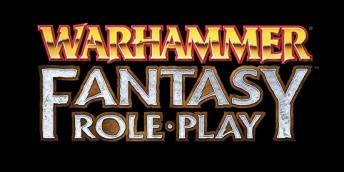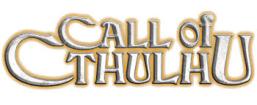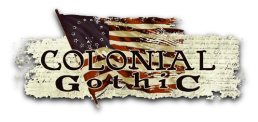Archive
Women in Horror Month
February is Women in Horror Month. This event has grown over the years into an international movement supporting and celebrating women authors, artists, film-makers, and everyone else who contributes to the horror genre. If you don’t already know about it, you should. Here are a few links to get you started.
The Women in Horror Month web site: https://www.womeninhorrormonth.com/
The WiHM Facebook page: https://www.facebook.com/WomenInHorrorMonth/
…and Facebook group: https://www.facebook.com/groups/womeninhorrormonth/
…and Twitter feed: @WiHmonth
…and hashtag: #WiHM
But, of course, women in horror are not something to be celebrated in February and forgotten for the rest of the year. These sites and groups are busy year-round. There is always news, and there are always creators in need of support. Today, I heard about Debbie Lynn Smith Daughetee, the owner of Kymera Press. She has just announced a Kickstarter campaign for Mary Shelley Presents, the Trade Paperback.
Using Mary and Frankenstein’s monster as hosts, this project will use the graphic novel format to retell stories by the great female horror writers of the Victorian era. It looks good – very good. Here’s a link to the Kickstarter page.
Kymera Press is one of the few woman-owned comic book publishers in the industry. They embrace the fact that women are the fastest growing demographic in comic book readership, and in their own words, they “publish comics that are written and drawn by women, to be loved and cherished by folks of all sexes.” Here’s a link to their web site.
As in science, art, and just about everything else, women have been involved in horror from the very beginning, and their contributions to the genre are just starting to be recognized. Everyone knows about Mary Shelley, of course, but she was not alone. This BBC article claims that women wrote as much of 70% of the horror tales published during the form’s first golden age in the 19th century.
Here are some names to conjure with: Louisa May Alcott, Harriet Beecher Stowe, Edith Nesbit, Helena Blavatsky, and Edith Wharton. In addition to the titles for which they are famous, all of these ladies wrote horror tales. And there are many more ladies whose work is being brought back to life – if you’ll pardon the expression – by Kymera Press and others.
A couple of years ago, I published an anthology called More Deadly Than the Male, in which I showcased the work of these ladies and others. That’s one reason why this Kickstarter campaign is especially interesting to me. If you’d like to know more about the book, here’s a post I wrote about it, and here is an interview I did for Colorado Public Radio talking about the book and the ladies whose work features in it.
I’m working on a couple more anthologies, and part of me hopes to compile another anthology of stories by even more of the ladies who helped define horror in its early days. Another part of me hopes that it will no longer be necessary to showcase women – as writers of horror or in any other context – with the unspoken subtext “…and they’re girls!” Rather, I hope for a world in which they and their work are recognized on their own merits, on equal terms with the male writers whose names are still much better known.
To me, Women in Horror Month is part of the process of bringing that about – and of helping ensure that today’s women in horror will never face such undeserved obscurity.
The Twelve Books of Christmas: Part Twelve
My twelfth book of Christmas is not actually published until February, but it can be pre-ordered now – and arrive in time for Valentine’s Day, so there’s another holiday covered. You’re welcome.
Following on from the success of Colonial Horrors, I have assembled another anthology of pioneering horror stories, this time from female authors. More Deadly than the Male includes a story by Mary Shelley, of course, but there are some surprises as well. When she was not writing about the March family in Little Women and its sequels, Louisa May Alcott took time out to write one of the first mummy tales. Harriet Beecher Stowe wrote several ghost stories, one of which is also in the collection. British readers of a certain age will remember Edith Nesbit’s classic The Railway Children with affection, but may not be aware of her extensive horror output. There are also obscure names like Vernon Lee (Violet Paget, adopting a male nom-de-plume in order to be take seriously) and forgotten ones like Alice Rea.
The publication date is well chosen, since February 2019 will be the tenth annual Women in Horror Month, while March is Women’s History Month. All of the ladies in this collection led surprising and inspiring lives: some were remarkable only for the fact that they made their mark in the male-dominated world of literature, while others achieved far more.
Most surprising of all, perhaps, is the claim made in a BBC online article that at the height of the 19th-century fashion for horror stories, more than 70% of published tales were written by women. They often brought a psychological dread to their horror, as well as some social commentary: Charlotte Perkins Gilman’s “The Yellow Wall-Paper” is a vivid portrait of psychological disintegration on the one hand, and on the other a savage indictment of the so-called “rest cure” – effectively a form of solitary imprisonment which kept women from embarrassing their families, under the guise of paternalistic concern for the delicate nature of the “weaker sex.”
Here are extracts from some early reviews:
“Davis (Colonial Horrors) has done thoughtful literary excavation, and the stories he has selected are a trove of fantastic gems.”
– Publisher’s Weekly“An incredible collection of lesser-known ghost stories from female writers of the 18th and 19th centuries.”
– Goodreads
…and here is a link to the book’s page on the Pegasus Books web site.
This concludes my twelve books of Christmas. Thank you for reading, and I hope you have found something interesting – and perhaps some inspiration for a last-minute gift – among them. Links to various online retailers can be found on the My Books page, but if you find them at a brick-and-mortar store, your purchase will help them as well as helping me.
Merry Christmas to all, or the compliments of whichever season you celebrate at this time of year. May 2019 be a year in which unity triumphs over division, compassion over hate, and understanding over fear. And may it be a year in which more people discover, or rediscover, the joy of reading.
Click here for Part One: Colonial Horrors.
Click here for Part Two: Nazi Moonbase.
Click here for Part Three: Werewolves – A Hunter’s Guide.
Click here for Part Four: Theseus and the Minotaur.
Click here for Part Five: The New Hero, vol. 1.
Click here for Part Six: Knights Templar – A Secret History.
Click here for Part Seven: The Lion and the Aardvark.
Click here for Part Eight: Thor – Viking God of Thunder.
Click here for Part Nine: Tales of the Frozen City.
Click here for Part Ten: Blood and Honor.
Click here for Part Eleven: The Dirge of Reason.
The Twelve Books of Christmas: Part Three
Today, I am showcasing another book I wrote for the Dark Osprey line: Werewolves: A Hunter’s Guide. As always, you can find links to various online retailers on the My Books page.
 This was a companion volume to two previous titles, covering zombies and vampires. In the first, author Joe McCullough had established the fiction of the Nightmen, a fictional U.S. Army unit specializing in supernatural warfare. Using this as a basis, I examined werewolves in film, folklore (including historical trials), and elsewhere.
This was a companion volume to two previous titles, covering zombies and vampires. In the first, author Joe McCullough had established the fiction of the Nightmen, a fictional U.S. Army unit specializing in supernatural warfare. Using this as a basis, I examined werewolves in film, folklore (including historical trials), and elsewhere.
The first thing I discovered was that there are many different kinds of werewolf. As well as the classic movie version – the “viral” werewolf – I identified shamanic werewolves created by spirit travel, sorcerous werewolves created by witchcraft – by far the most common kind in records of medieval trials – werewolves created by divine and saintly curses, and those arising from delusion and other mental illness. I also looked into other animal shapechangers, such as Native American skinwalkers and Japanese hengeyokai.
I had almost as much fun with the various werewolf-hunting organizations worldwide. In addition to the Nightmen of the U.S. Army, you will find the Tyana Society founded by Benjamin Franklin, which did much to combat British Freemasons in the Revolutionary War; Britain’s Talbot Group, founded during World War II for commando and anti-supernatural operations; the Japanese yokai jingcha, the aristocratic Zaroff Society, among others. The obligatory Nazi werewolves are covered, as are the ulfhednar berserkers of Norse traditions.
Here is what some reviewers had to say:
“I can’t imagine anyone with even a passing interest in horror and werewolves passing on this particular book, but if you’re considering doing so, then well…. just think very, very carefully before the next full moon.”
– Unbounded Worlds
“I don’t usually take notes when I read a book for entertainment, but in this case I did. … [A] well-researched, lavishly illustrated and clearly organized book.”
– Goodreads
…and here’s a link to the book’s page on Osprey’s web site. It is available in paperback, ePub, and PDF formats.
Tomorrow, and every day until Christmas, I will be covering another title. If you’re not done with your Christmas shopping, or if you are expecting to receive some gift tokens, take a look: you might find something you like.
Click here for Part One: Colonial Horrors.
Click here for Part Two: Nazi Moonbase.
Click here for Part Four: Theseus and the Minotaur.
Click here for Part Five: The New Hero, vol. 1.
Click here for Part Six: Knights Templar – A Secret History.
Click here for Part Seven: The Lion and the Aardvark.
Click here for Part Eight: Thor – Viking God of Thunder.
Click here for Part Nine: Tales of the Frozen City.
Click here for Part Ten: Blood and Honor.
The Twelve Books of Christmas: Part One
You can find links to buy a lot of my work on the My Books page, but in the run-up to Christmas I will be showcasing a dozen of them that make ideal gifts for the geek in your life. The first is Colonial Horrors, a curated anthology of tales from the earliest years of American horror.

The book was first published last October in hardback, and a paperback edition was released a few weeks ago: Amazon also offers a Kindle version. It is a curated anthology, with an introduction discussing the origins of horror fiction in America, and individual notes on each story.
There are seventeen tales in all, published from 1684 to 1927, all of them chosen for the light they shed on the Colonial era and its role in American horror. Just as the European Gothic features the wild mountains, crumbling castles, and ruined monasteries of that continent, so the American Gothic looks to the dark forests, inward-looking towns, and stifling religion of the colonies. From the accounts of the Salem witch trials in 1692 to the 2015 movie The VVitch with its old-fashioned typography, from the earliest tales of the Jersey Devil to the beloved and oft-adapted tale “The Legend of Sleepy Hollow,” the collection covers both the familiar and the unexpected.
Unexpected, you say? How about this:
- The legend of the Jersey Devil began in a religious dispute between two publishers at the start of the 18th century;
- The contributions from Cotton and Increase Mather, well known for their involvement in the Salem hysteria, were believed by their authors to be nonfiction;
- America’s first Gothic novelist, Charles Brockden Brown, is remembered today only by a handful of academics;
- Nathaniel Hawthorne, a descendent of a Salem judge, wrote horror tales as well as moral commentary;
- The cult movie The Blair Witch Project was based (very loosely, as it turns out) on a reported haunting.
But don’t take my word for it. Here are extracts from some reviews:
“For lovers of American literature and horror fiction fans, this important anthology reveals how the religious beliefs, historical events, and folktales of the colonial period influenced the writerly imaginations that led to the evolution of the modern horror genre.”
– Library Journal (starred)“A well-curated collection of creepy, spooky, and downright weird pieces by a core group of American authors. As the nights grow cooler and the shadows longer, stoke the fire and curl up with this excellent example of true American horror.”
– Booklist“Rather than the gothic castles of Europe, these feature witch trials and dark and foreboding forests. The colonial period was truly the birthplace of American horror, as these stories point out.”
– The News-Gazette (Champaign, IL)
Colonial Horrors can be found at any online retailer and at many good bookstores. The publisher, Pegasus Books, has this to say about it.
Tomorrow, and every day until Christmas, I will be covering another title. If you’re not done with your Christmas shopping, or if you are expecting to receive some gift tokens, take a look: you might find something you like.
Click here for Part Two: Nazi Moonbase.
Click here for Part Three: Werewolves – A Hunter’s Guide.
Click here for Part Four: Theseus and the Minotaur.
Click here for Part Five: The New Hero, vol. 1.
Click here for Part Six: Knights Templar – A Secret History.
Click here for Part Seven: The Lion and the Aardvark.
Click here for Part Eight: Thor – Viking God of Thunder.
Click here for Part Nine: Tales of the Frozen City.
Click here for Part Ten: Blood and Honor.
Click here for Part Eleven: The Dirge of Reason.
Click here for Part Twelve: More Deadly than the Male.
Colonial Horrors: Goodreads Giveaway!

I’m looking forward to the release of my anthology Colonial Horrors in October. Between now and Halloween, I’ll be posting details of promotional events, including some readings and appearances that I will be doing in the Denver area. The first, though, is global: a Goodreads giveaway where you can win one of three copies that are up for grabs.
Here’s the publisher’s blurb for the book:
The most spine-tingling suspense stories from the colonial era—including Washington Irving, Nathaniel Hawthorne, James Fenimore Cooper, Edgar Allan Poe, Henry James, and H. P. Lovecraft—are presented anew to the contemporary reader.
This stunning anthology of classic colonial suspense fiction plunges deep into the native soil from which American horror literature first sprang. While European writers of the Gothic and bizarre evoked ruined castles and crumbling abbeys, their American counterparts looked back to the Colonial era’s stifling religion and its dark and threatening woods.
Today the best-known tale of Colonial horror is Washington Irving’s “The Legend of Sleepy Hollow,” although Irving’s story is probably best-known today from various movie versions it has inspired. Colonial horror tales of other prominent American authors—Nathaniel Hawthorne and James Fenimore Cooper among them—are overshadowed by their bestsellers and are difficult to find in modern libraries. Many other pioneers of American horror fiction are presented afresh in this breathtaking volume for today’s reading public.
Some will have heard the names of Increase and Cotton Mather in association with the Salem witch trials, but will not have sought out their contemporary accounts of what were viewed as supernatural events. By bringing these writers to the attention of the contemporary reader, the book will help bring their names—and their work—back from the dead. Featuring stories by Cotton Mather, Washington Irving, Nathaniel Hawthorne, James Fenimore Cooper, Edgar Allan Poe, Henry James, H. P. Lovecraft, and many more.
The book was inspired by the success of the TV show Sleepy Hollow – now canceled, alas – and my involvement with Colonial Gothic, Rogue games’ tabletop roleplaying game of adventure, horror, and conspiracy at the dawn of American history. As I read more about the period, I found a whole body of literature – some famous, some long forgotten – and discovered the native soil of American horror fiction.
Publisher Pegasus Books has done a bang-up job of design and production, creating a book that I’m very proud of. Here are a few more links:
Colonial Horrors at Pegasus Books
Amazon
Amazon.co.uk
Barnes & Noble
Waterstone’s
Books-A-Million
Goodreads





 Toward the end of the year,
Toward the end of the year, 



